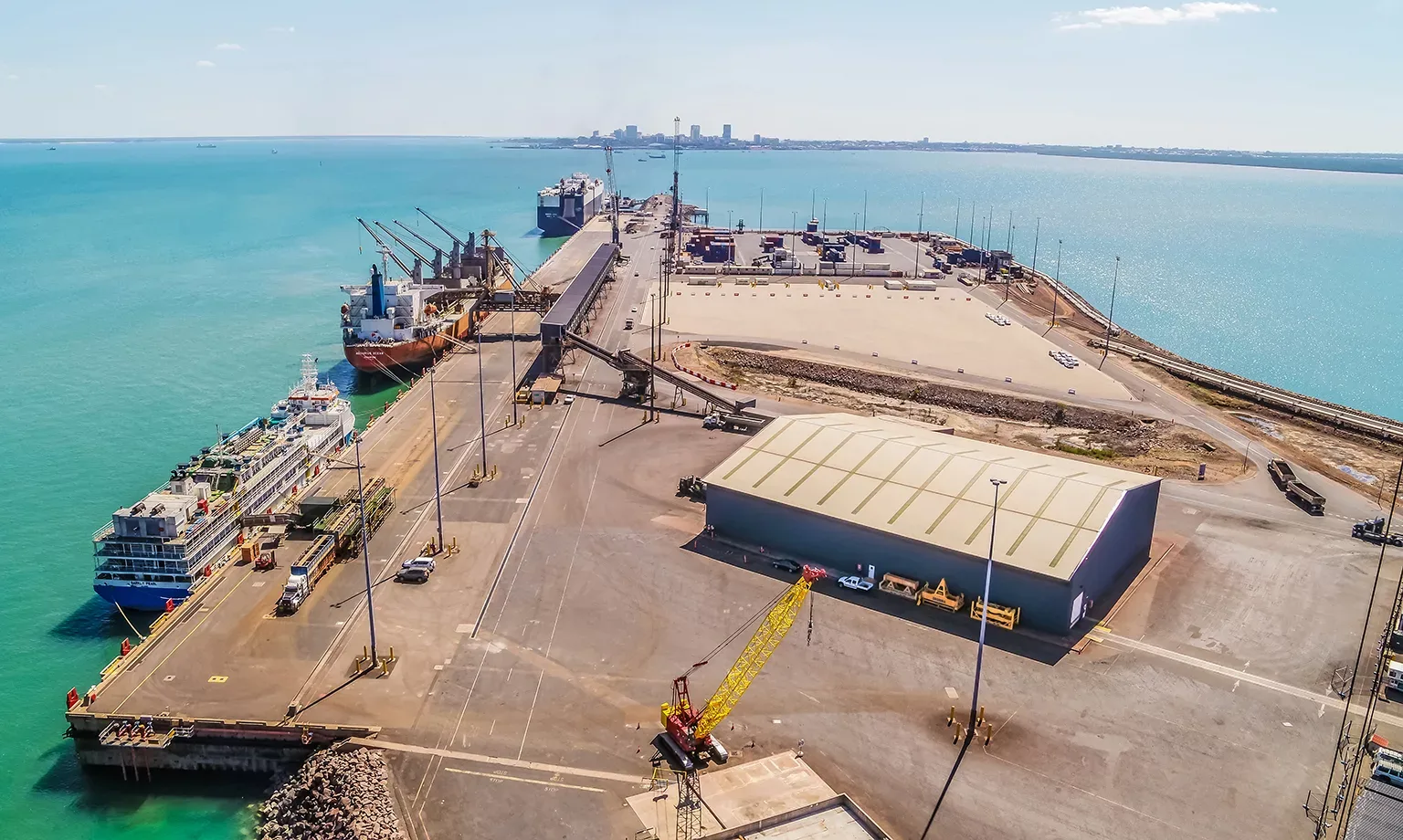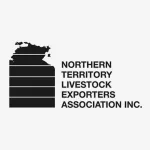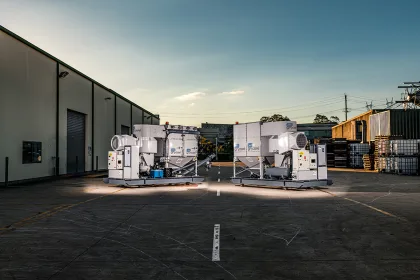SAILING TO SUCCESS
With approximately 95 employees, Darwin Port provides world-class pilotage and harbour control systems and a seamless supply chain capable of handling containers, general cargo, bulk liquids and materials, live exports, and heavy-lift oversized cargo.
Moreover, it also services cruise ships and naval vessels at the Fort Hill Wharf facility. It is a first port of entry for large cruise ships visiting Australia and is primarily used for this purpose in conjunction with naval vessel visits and small non-cargo carrying boats.
Fort Hill Wharf has a total quay length of 300 metres (m), with a natural deep-water berth located just minutes from the central business district (CBD). The facility includes a passenger terminal with the ability to accommodate offshore international passenger processing, as well as ships spanning up to 350m in length.
Dummett currently finds the supply chain space in Australia an exciting place to work in as it poses ever-evolving challenges and innovation that keep those in the industry invigorated.
“There is quite a bit of consolidation and integration being developed in the Australian supply chain at present. Some operators are looking to provide a ‘one invoice’ concept for multimodal operations, which can appeal to some organisations,” Dummett reflects.
As Australia is a large country, efficient and cost-effective landslide logistics networks are critical for producers to get their products to market, regardless of whether they are domestic or international, further proving the dedication and hard work Darwin Port puts into its day-to-day efforts.
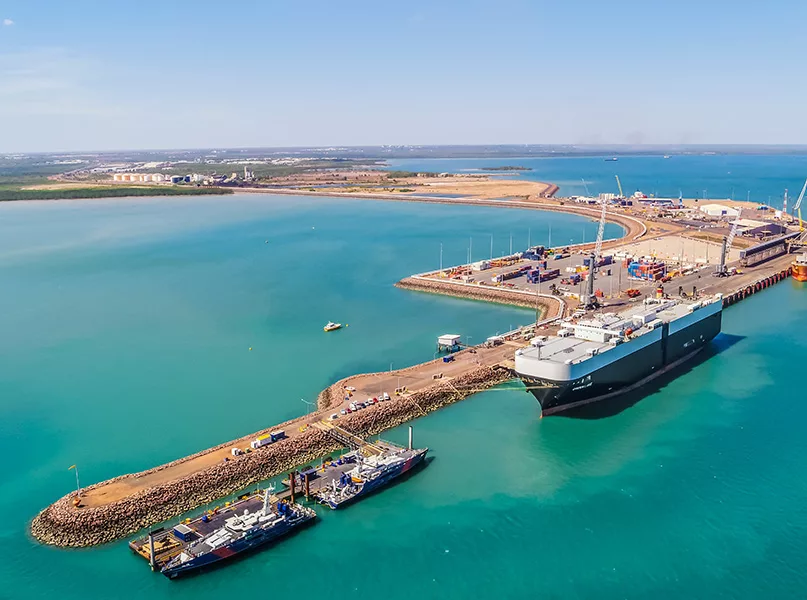
PORT DEVELOPMENT
In recent years, DPO has continued to invest in the infrastructure of Darwin Port, focusing on optimising and utilising its existing assets.
“Key investments to grow the port’s capacity include the development of approximately 80,000 square metres (sqm) of additional bulk materials stockpiling area as well as investment in additional undercover storage facilities,” Dummett reveals.
Darwin Port has implemented various ship loader productivity improvement initiatives and transformed its data collection and analysis processes to enable a comprehensive understanding of operational performance.
“Whilst we have put a lot of effort into growth-focused investments, we have also delivered major maintenance programmes with key projects, including the progressive replacement of our firefighting system at our bulk liquids fuel import facility, which was achieved without any interruption to terminal operations that facilitate all the Northern Territory’s fuel imports,” he continues.
Continuing the focus on optimisation and efficiency, Darwin Port has a number of exciting projects planned to maximise the value that can be delivered from its assets.
This includes the planned development of additional hardstand areas within the port to support the stevedoring operators who are responsible for loading and unloading cargo from or to the vessel.
This work will continue over the next few years alongside a significant investment in rejuvenating existing hardstand areas.
“We will progress the design and potential construction of conveying infrastructure to connect our bulk materials storage area with the existing ship loading infrastructure. This will facilitate the next generation of bulk material export projects by providing an integrated port/rail infrastructure solution.
“More broadly, we see a huge amount of potential to support the future decommissioning requirements of the offshore oil and gas industry and believe that we are located in a prime position with the correct assets to play a key supporting role,” Dummett explains.
PILOTAGE SERVICES
Darwin Port Pilotage Pty Ltd (DPPP) is the designated pilotage services provider for the Port of Darwin. DPPP and DPO provide an integrated approach toward all acts of pilotage by partnering with the ship’s bridge team to ensure pilotage is done safely and professionally.
In order to achieve this, DPPP and DPO provide pilots that are licenced and experienced for all types of ships that seek safe passage within the Port of Darwin. All pilots receive a significant amount of training within the port environment and on purpose-built simulators. The wide variety of shipping that use the port provides the team with ample training opportunities.
Darwin Port pilots are International Standard for Maritime Pilot Organizations (ISPO) certified, and this accreditation is audited regularly to ensure that pilotage services provided are in accordance with the DPPP Safety Management System that has been developed by referring to the latest internationally recognised legislation, regulations, standards, and recommended practices.
MARKET SUCCESS
As Asia has the highest population density in the world, the close proximity of Darwin Port provides a competitive advantage in terms of shipping costs and duration compared to other Australian ports.
“In terms of product, the import of petroleum is the biggest commodity. The Vopak terminal supplies fuel for the Northern Territory, all imported through our port,” Dummett states.
From an export perspective, bulk minerals are the company’s biggest market, with the majority being shipped to China for use in its steelmaking operations.
Indeed, China was Australia’s leading export partner in 2022, importing approximately USD$103 billion worth of goods.
Live cattle is also a major export, with Indonesia receiving nearly 90 percent of the commodity exported from Darwin.
East Arm Wharf has a rail-mounted bulk minerals ship loader with a maximum loading capacity of 2,000 tonnes per hour. Bulk minerals, such as iron ore and manganese, are transferred from rail wagons to the stockpile areas using a dedicated conveyor.
The Minerals Council of Australia reported that iron ore exports surged by 20 percent in 2021. Geologically, Australia is an ancient continent with an abundant supply of minerals and a relatively flat terrain, and apart from some coastal regions, it is sparsely populated – both aspects benefit exploration and mine development.
As an island country, Australia has 17 nationally significant ports, selected based on ship call, throughput, and international sea trade values. The country mostly imports containerised cargo and exports bulk cargo. Darwin Port is the only multi-user and multi-commodity port in the Northern Territory.
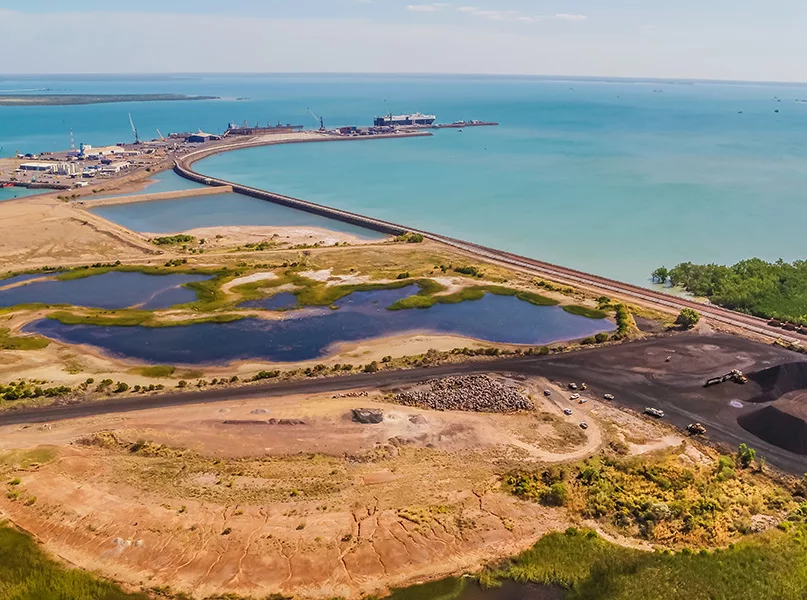
SUSTAINABLE PORT OPERATIONS
Darwin Port takes environmental sustainability seriously and undertakes a series of measures to protect the harbour’s marine flora and fauna. There are 36 species of mangroves and diverse marine life characterising Darwin Harbour. Darwin Port has not needed to develop any mangrove areas since the construction of East Arm Wharf in excess of two decades ago.
“We continue to maintain a number of measures to improve environmental sustainability, and are currently developing a sustainability strategy to make further improvements for the future within Darwin Port facilities,” Dummett points out.
One area, known as Pond D, is 12 hectares (ha) in size and is protected from development and other activities that would be detrimental to migratory birds. The endangered Eastern Curlew, Whimbrel, and Great Knot are some of the migratory species that frequent it, particularly during the wet season.
Darwin Port does not have any waste or wastewater discharges to the harbour, as all waste is removed from the site by contractors and the sewerage system. Furthermore, stormwater from large areas of the wharf passes through sedimentation ponds prior to entry to the harbour.
“We have participated in the Darwin Harbour Clean Up since it started 13 years ago. 2023’s endeavour, coordinated by Larrakia Nation rangers, saw Darwin Port participants collect about 135 kilogrammes (kg) of rubbish from the beach and mangroves of the Wickham Point area,” he divulges.
These initiatives are part of a multi-faceted approach, including the Port Environmental Protection Plan. Through this, Darwin Port regulates the speed of commercial vessels to minimise the risk of vessel strikes on marine fauna such as dolphins, dugongs, and turtles. The speed limits vary depending on the pilotage area of the harbour.
However, the port’s shipping channels do not require annual or frequent maintenance dredging, and the last project of that scale occurred during 2016.
“Our operations are ISO14001 Environmental Management Systems certified by an independent auditor. Furthermore, we are currently developing a comprehensive sustainability programme, which will better coordinate our existing activities and bring in new sustainability measures to be implemented,” outlines Dummett.
“We continue to maintain a number of measures to improve environmental sustainability, and are currently developing a sustainability strategy to make further improvements for the future within Darwin Port facilities”
Peter Dummett, CEO, Darwin Port
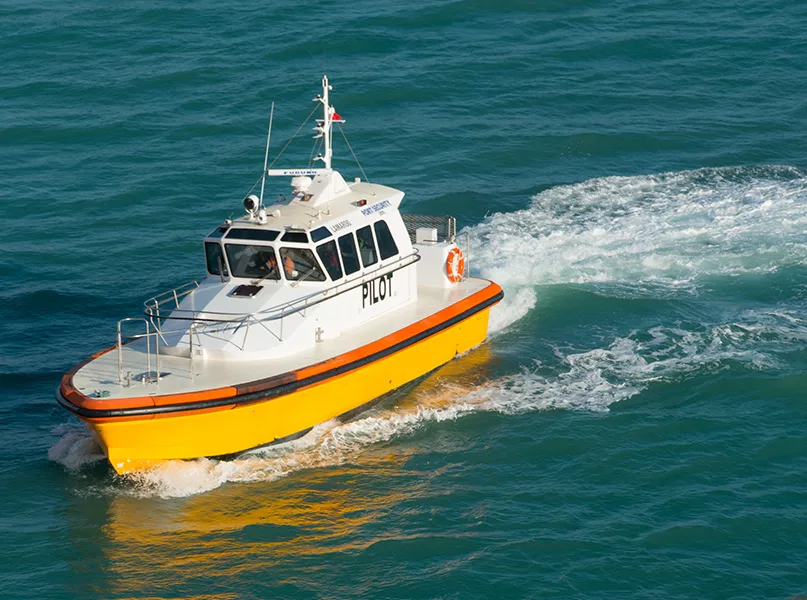
NATURAL MARINE ENVIRONMENT
Growing in fine sediments, mangrove forests line the tidal boundaries and cover more than 26,000 ha.
Three species of dolphin – the Australian snubfin, the Australian humpback, and the Indo-Pacific bottlenose – are commonly encountered within the Darwin Harbour region. These majestic marine mammals are seen alongside dugongs and six species of sea turtles, including flatback and olive ridley turtles.
The saltwater crocodile also inhabits the harbour, though it is actively removed from it as part of a crocodile management programme managed by the Northern Territory government.
Additionally, Darwin Harbour supports endemic and migratory birds, such as the snipe, godwit, curlew, and sandpiper species. Many shorebirds that visit the mudflats are migratory species protected by the Japan-Australia Migratory Bird Agreement (JAMBA) and the China-Australia Migratory Bird Agreement (CAMBA).
Darwin Port manages marine oil spills in Darwin Harbour in accordance with the Darwin Port Oil Spill Contingency Plan. Furthermore, the Northern Territory government has its own contingency plan across the area.
Regarding environmental monitoring, Darwin Port conducts a sample and analysis programme to check the health of the facilities and their surroundings. Early detection of emerging issues will enable action to be taken, minimising environmental impact.
The physical, chemical, and biological properties that are monitored include water, marine sediment, air quality, noise, trade waste, energy consumption, and greenhouse gas (GHG) emissions.
PAST, PRESENT, AND FUTURE
Australian ports have a rich history dating back to the early days of European settlement. The first significant ports were established in Sydney, Melbourne, and Hobart during the late 18th and early 19th centuries. These ports served as crucial gateways for the transportation of goods and people.
During the gold rush in the mid-19th century, ports such as Melbourne and Sydney experienced a surge in maritime activity as immigrants arrived seeking their fortune. The development of rail networks further connected inland areas to coastal ports, facilitating trade.
In the 20th century, containerisation revolutionised cargo handling, and many Australian ports adapted to this new system. Major hubs like Port Botany in Sydney and the Port of Melbourne expanded their facilities to accommodate larger vessels and increased trade volumes.
Historically, Australian ports have played a pivotal role in the nation’s economic development, facilitating imports, exports, and domestic transportation. Today, they continue to be vital to Australia’s trade and connectivity with the global economy.
The Darwin Port team takes great pride in delivering a comprehensive portfolio of maintenance and capital projects each year, with as many as 50 discrete projects completed annually in addition to its routine activities.



